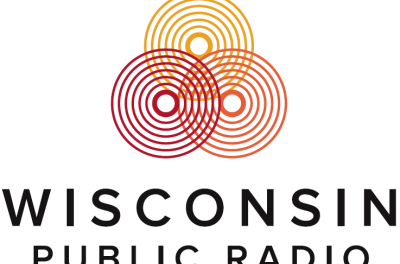
Given that cultural expectations frequently place a premium on youth and vigor, it is not surprising that weight loss is a hot-button issue.
But what about older women? Do their physiology and environment allow for successful strategies?
Absolutely! In truth, this unique group’s successful weight reduction adventures can only be unlocked by studying the physiology of women over 40.
Women’s bodies change significantly as they age, which may affect weight gain and metabolism. Hormonal changes, especially during menopause, might increase the likelihood of gaining weight, particularly around the waist.
Sarcopenia, or the normal loss of muscle mass, significantly slows metabolism and makes losing those extra pounds impossible.
But there’s no reason to give up.
Women over 40 may achieve their weight loss goals and see transforming effects by embracing the power of information and science-based solutions.
Adjusting diet, exercise, and lifestyle decisions may be extremely beneficial to meet this age group’s particular demands and problems.
Effective weight loss techniques tailored for women can improve physical health and self-esteem and general well-being, energy levels and lifespan.
Understanding the physiology of women over 40
Understanding the physiological changes at this period of life is vital for creating weight reduction plans for women over 40 that work.
As women age, several variables might affect weight gain and metabolism.

Hormonal changes
Women generally go through menopause between the ages of 45 and 55, which causes estrogen levels to drop.
Weight gain may be influenced by this hormonal change, particularly in the abdominal area [1].
- Hormone imbalances
Other hormone changes that might alter metabolism and body composition in women include those in progesterone and testosterone.
Muscle loss and metabolism
- Sarcopenia
Women frequently develop sarcopenia, or muscular loss, as they age. It may be simpler to acquire weight due to this loss of muscle mass due to a lowered metabolic rate.
- Basal metabolic rate (BMR)
Age-related BMR reduction causes lower resting calorie expenditure. The difficulty of losing weight may increase due to this decreased calorie expenditure.
Body composition and metabolic rate
- Increase in body fat percentage
As women age, their body fat percentage, especially visceral fat, frequently rises. There is a larger chance of health problems when visceral fat is present.
- Decreased metabolic rate
Changing body composition with aging, such as losing muscle mass, might result in a slower metabolic rate. Losing or maintaining weight is more difficult as a result.
Setting realistic weight loss goals
Creating attainable objectives while starting a weight lossjourney is crucial, especially for women over 40.
You may improve your chances of long-term success and prevent frustration or disappointment by setting realistic and sustainable objectives.
When setting weight loss objectives, keep the following stages in mind:
Emphasize sustainable progress
- Gradual approach
Aim to lose 1-2 pounds of weight gradually each week. This gradual advancement is more durable and better for your body.
- Long-term perspective
Concentrate more on making long-term lifestyle improvements than short-term outcomes. Making long-term habits rather than using fast cures is the key to sustainable weight loss.
Determine healthy and achievable goals
- Consult with a healthcare professional
See a healthcare expert or registered dietitian to determine a healthy weight range based on your body composition, health state, and unique circumstances [2].
- Body Mass Index (BMI)
When setting objectives, use your BMI as a basic reference, but remember that it doesn’t consider changes in muscle mass and body composition.
Focus on overall health and well-being
- Beyond the numbers
Prioritize overall health enhancements like greater energy levels, better sleep and improved attitude instead of focusing simply on the number on the scale.
- Non-scale victories
Celebrate achievements outside weight loss, such as gains in power, fitness, mobility or ability to wear smaller sizes.
Nutrition for weight loss
Proper nutrition plays a vital role in weight loss for women over 40. Adopting a balanced and nutrient-dense diet can support your weight loss goals while nourishing your body with the essential nutrients it needs. Here are key considerations for nutrition during weight loss:
Calorie requirements and meal planning
- Caloric deficit
To lose weight, you must create a calorie deficit by consuming fewer calories than you burn. Determine your daily calorie needs based on age, height, weight, activity level, and weight loss goals.
- Portion control
Pay attention to portion sizes and practice mindful eating to avoid overeating. Use smaller plates and bowls to help with portion control.
Optimal nutrient intake
Including adequate protein in your diet is crucial for preserving muscle mass, supporting metabolism, and promoting satiety. Incorporate lean protein sources like poultry, fish, tofu, legumes, and Greek yogurt.
High-fiber foods can promote feelings of fullness and support digestive health. Include fruits, vegetables, whole grains, and legumes in your meals.
- Healthy fats
Incorporate sources of healthy fats like avocados, nuts, seeds, and olive oil. These fats provide satiety and support overall health.
Hydration and beverages
Stay hydrated by drinking an adequate amount of water throughout the day. Water can help control appetite, support metabolism, and promote overall health.
- Limit sugary beverages
Minimize or eliminate sugary drinks like soda and fruit juices, as they provide empty calories and can hinder weight loss progress.
Mindful eating and behavior
- Slow eating
Chew your food thoroughly and eat slowly to allow your brain to register fullness. This can prevent overeating and promote better digestion.
- Emotional eating
Recognize emotional triggers for eating and develop alternative coping strategies like engaging in hobbies, practicing relaxation techniques, or seeking support.
Seek professional guidance
- Registered dietitian
Consider consulting a registered dietitian specializing in weight management to receive personalized nutrition guidance tailored to your needs and goals.
- Individualized approach
Everyone’s nutritional needs and preferences are unique. A dietitian can help create a customized meal plan that suits your lifestyle, dietary restrictions, and weight loss goals.
Strength training for women over 40
Women over 40 who want to shed pounds, improve body composition and general health can use strength training as a great tool.
Numerous advantages might result from using regular strength training workouts in your fitness regimen.
The following information will help you understand strength training for women over 40:
Benefits of strength training
- Increased muscle mass
Strength training combats age-related muscle loss (sarcopenia) by encouraging muscular development and maintenance. This may improve metabolism and raise calorie expenditure.
- Improved body composition
By lowering body fat and boosting muscle tone, strength training may help you modify your body for a leaner, more defined figure [3].
- Enhanced bone health
Strength training movements including weight bearing can increase bone density and lower the risk of osteoporosis.
- Enhanced functional fitness
Strength training increases functional fitness, stability and general strength, simplifying daily tasks and lowering the chance of accidents.

Cardiovascular exercise and its impact on weight loss
Any successful weight reduction program for women over 40 must include cardiovascular activity, usually cardio or aerobic exercise.
Regular cardio exercise has various advantages that can aid in weight loss and general well-being.
Here’s what you need to know about cardiovascular exercise and its impact on weight loss:
Calorie burning and weight loss
Cardio workouts are essential for burning calories, establishing a calorie deficit, and promoting weight loss.
When you perform cardiovascular exercises like jogging, cycling or dancing, your body draws on fat reserves to fuel the session.
More calories are burned during a cardio workout, which helps with weight reduction, the longer and more intense the activity is.
Boosting metabolism and fat loss
In addition to burning calories when you exercise, cardiovascular activity also speeds up your metabolism for several hours afterward.
The afterburn effect, sometimes called excess post-exercise oxygen consumption (EPOC), is a higher metabolic rate that enables your body to continue burning calories long after you’ve stopped exercising.
Regular cardiac exercise improves your body’s ability to use fat as a fuel source, aiding in fat loss and helping develop a leaner physique.
Choosing the right cardio activities
Choosing the right aerobic exercises is crucial, especially for women over 40 with particular needs.
Exercises with little impact, such as brisk walking, swimming, cycling, or using an elliptical machine, are kind on the joints while having significant cardiovascular advantages.
Another choice is high-intensity interval training (HIIT), which mixes brief bursts of intensive activity with rest intervals to increase calorie burn and strengthen the heart.
Balancing cardio with other exercises
While doing cardio is necessary for weight loss, it’s also important to balance your schedule by doing other forms of exercise.
Lifting weights and utilizing resistance bands are strength training activities that assist in developing lean muscle mass.
More muscle can boost your basal metabolic rate (BMR) and reduce weight since muscle is a metabolically active tissue [4].
Yoga and stretching are two flexibility exercises that can aid mobility, injury prevention and general well-being.
Safety considerations and progression
Speaking with a healthcare provider before beginning any aerobic fitness program is crucial, especially if you have any health issues or concerns.
Allow your body time to adjust to the demands of cardiac activity by starting slowly.
To reduce injury risk and speed up recovery, warm up before each workout and cool down afterward.
To prevent overexertion, pay attention to your body and modify the intensity or length of your exercises as necessary.
Conclusion
Weight reduction in women over 40 can be effectively aided by cardiovascular activity.
Regular cardiac exercise aids calorie burning, metabolic stimulation, and fat loss.
Women may attain their weight reduction objectives while enhancing their general health and well-being by adopting a range of aerobic workouts, balancing them with strength training and flexibility exercises, according to suggested standards.
For long-term success, remember to select pastimes you love, pay attention to your body, and include cardiac activity into a sustainable part of your daily life.
FAQs
What is the best fasting method for 40-year-old woman?
The ideal fasting strategy for a woman over 40 will depend on her personal preferences, health needs, and goals. A certified dietitian or healthcare expert should be consulted to help you choose a fasting strategy that fits your requirements. Intermittent fasting, time-restricted eating, and alternate-day fasting are popular fasting strategies. Each has advantages and drawbacks.
Can I drink coffee while fasting?
Yes, black coffee has few calories and has little effect on insulin levels, so you may continue to get the benefits of fasting. Don’t add sweets, cream, or milk to your coffee to avoid disturbing the fasting condition.
What can I drink in the morning while intermittent fasting?
You can have water, black coffee, and unsweetened tea in the morning when intermittent fasting without breaking your fast. These drinks have few calories and often do not cause insulin release, enabling you to keep fasting while getting hydration and a slight energy boost. Avoid adding sweets, cream, milk, or other calorie-dense ingredients to retain the advantages of fasting.
[1] https://www.sciencedirect.com/science/article/abs/pii/S2451965022000916
[2] https://www.helpguide.org/articles/diets/how-to-lose-weight-and-keep-it-off.htm
[3] https://www.medicalnewstoday.com/articles/calorie-deficit
[4] https://www.verywellfit.com/cardio-and-weight-training-and-fat-loss-3498325





